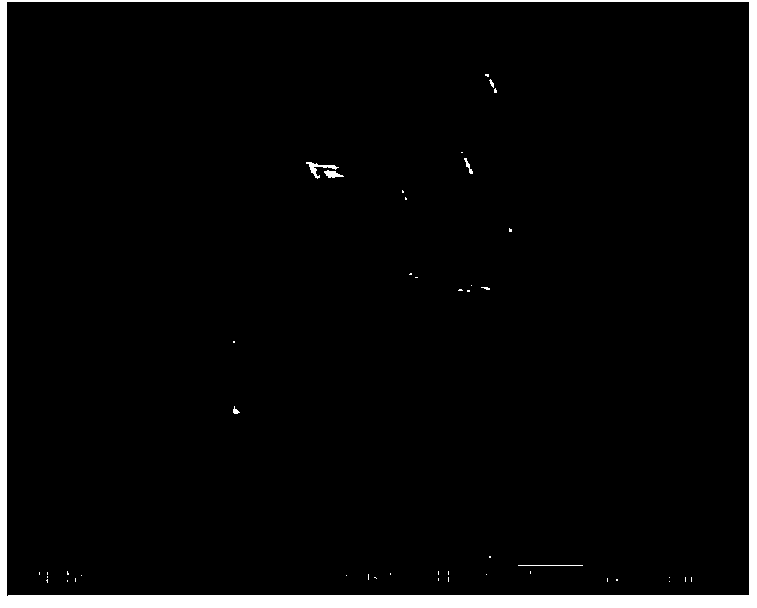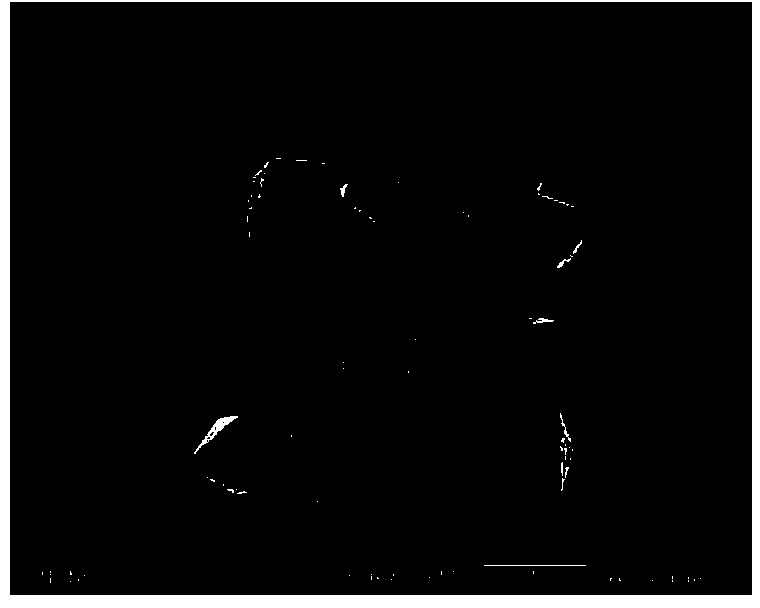Cu nanocrystallines and topological and chemical reduction method for preparing Cu nanocrystalline catalyst with different morphologies
A technology of topological chemistry and nanocrystals, applied in chemical instruments and methods, physical/chemical process catalysts, metal/metal oxide/metal hydroxide catalysts, etc.
- Summary
- Abstract
- Description
- Claims
- Application Information
AI Technical Summary
Problems solved by technology
Method used
Image
Examples
Embodiment 1
[0033] Cubic Cu 2 Synthesis of O nanocrystals
[0034] Use a 250ml three-necked flask to take 0.01mol / l CuCl 2 Put 100ml of the solution in an oil bath at 55°C, add 10ml of 2mol / l NaOH solution after constant temperature for 30 minutes, add 10ml of 0.6mol / l ascorbic acid solution after constant temperature for 30 minutes, and then stir for 5 hours at constant temperature. After the reaction, the obtained product was centrifugally washed (water and ethanol three times each) and then dried at room temperature in a vacuum oven for 12 hours to obtain Cu 2 O cube powder.
[0035] The above Cu 2 The synthetic method of O is referring to Zhang Dongfeng etc. (Delicate control of crystallographic facet-oriented Cu 2 O nanocrystals and the correlated adsorption ability.J.Mater.Chem.2009,19(29),5220-5225) provides the synthetic method. The reagent CuCl used in the preparation process 2 2H 2 Materials such as O, NaOH, ascorbic acid, absolute ethanol and ultrapure water were purchas...
Embodiment 2
[0037] Octahedral Cu 2 Synthesis of O nanocrystals
[0038] Use a 250ml three-necked flask to take 0.01mol / l CuCl 2 100ml of the solution was placed in a 55°C oil bath, and 4.44g of PVP (M w =30000), add 10ml of 2mol / l NaOH solution after constant temperature stirring for 30min, add 10ml0.6mol / l ascorbic acid solution after constant temperature for 30min, and then keep constant temperature for 3h. After the reaction, the obtained product was centrifugally washed (water and ethanol three times each) and then dried at room temperature in a vacuum oven for 12 hours to obtain Cu 2 O octahedral powder.
[0039] The above Cu 2 The synthetic method of O is referring to Zhang Dongfeng etc. (Delicate control of crystallographic facet-oriented Cu 2 O nanocrystals and the correlated adsorption ability.J.Mater.Chem.2009,19(29),5220-5225) provides the synthetic method. The reagent CuCl used in the preparation process 2 2H2O, PVP (M w =30000), NaOH, ascorbic acid, absolute ethanol a...
Embodiment 3
[0041] Dodecahedral Cu 2 Synthesis of O nanocrystals
[0042] 1mmol Cu 2 SO 4 Dissolve in 40ml of deionized water and place in a 250ml three-necked flask, then sequentially add 4ml of oleic acid and 20ml of absolute ethanol, place the resulting solution in an oil bath at 100°C, stir at constant temperature for 30min, then add 0.8mol / l10ml of NaOH solution, After constant temperature for 5min, add 0.114g / ml 30ml D-(+)-glucose solution, and then constant temperature for 1h. After the reaction, the obtained product was centrifugally washed (five times each with water and ethanol) and then dried at room temperature in a vacuum oven for 12 hours, and then Cu 2 O dodecahedral powder.
[0043] The above Cu 2 The synthesis method of O refers to the method provided by Liang Xudong et al. (Facile Synthesis and Shape Evolution of Single-Crystal Cuprous Oxide. Adv. Mater. 2009, 21, 2068–2071). Reagent Cu used in the preparation process 2 SO 4 , D-(+)-glucose, NaOH, oleic acid, abs...
PUM
 Login to View More
Login to View More Abstract
Description
Claims
Application Information
 Login to View More
Login to View More - R&D
- Intellectual Property
- Life Sciences
- Materials
- Tech Scout
- Unparalleled Data Quality
- Higher Quality Content
- 60% Fewer Hallucinations
Browse by: Latest US Patents, China's latest patents, Technical Efficacy Thesaurus, Application Domain, Technology Topic, Popular Technical Reports.
© 2025 PatSnap. All rights reserved.Legal|Privacy policy|Modern Slavery Act Transparency Statement|Sitemap|About US| Contact US: help@patsnap.com



